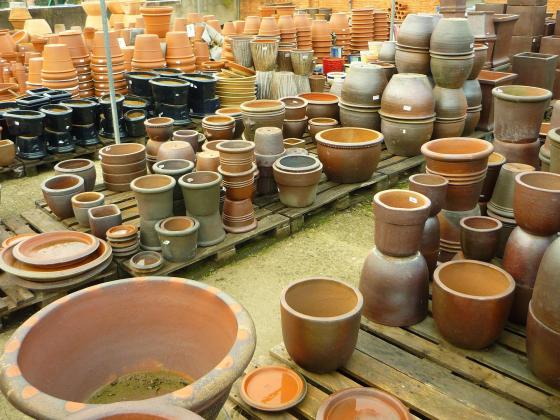
By Dan Gill
LSU AgCenter
Horticulturist
Growing plants in containers outdoors is popular for a variety of reasons. In-ground beds are not always available where you would like to grow plants — as in the case of paved courtyards, decks, apartment balconies and patios.
Flexibility and change are two other outstanding features because landscapes may be altered quickly by changing the arrangement or location of containers.
Plant selection
Nearly any plant may be grown in a container as long as you provide the cultural requirements that the plant needs. You can choose from small-growing evergreen or deciduous trees, shrubs, ground covers, herbaceous perennials and annuals. Tender tropicals are also good candidates because they can be brought into protected locations during winter.
The amount of light they will receive in the location where the container is placed is an important factor in deciding which plants would be suitable in a particular spot. Whether the location is sunny or shady, you must choose plants that will thrive in those conditions.
Also consider the size of the area and choose containers and plants that will be in proper scale. Small pots may look insignificant in the large spaces outdoors where larger pots would show up better and fit the scale of the location.
Containers
A large variety of manufactured containers and found objects varying in size, material, color, shape and design can be used for plantings. Only your imagination and taste set the limits. Generally, however, use containers with muted colors and simple designs because brightly colored and heavily decorated pots can detract from the plantings.
Choose larger-size containers whenever possible because small containers are usually out of scale with outdoor landscapes and require more frequent watering.
Make sure the containers you use have one or more drainage holes in the bottom to allow excess water to drain out of the pot when you water. This is critically important.
Potting soil or potting mix
More than anything else, the potting medium used in a container needs to drain well yet retain sufficient moisture to promote good growth. Two basic categories of potting media are suitable: soil mixes and soilless mixes.
Soil mixes contain soil along with organic matter and sharp sand, perlite or vermiculite to improve drainage. Make sure you purchase soil mixes specifically labeled “potting soil” for use in containers.
Soilless potting mixes have no soil in them and are composed of peat moss, perlite and vermiculite in varying proportions. Their advantages are excellent drainage, good water retention, light weight and freedom from any insect, disease or weed problems. The main drawback is that they are relatively low in nutrients, a problem easily corrected by the use of slow-release or soluble fertilizers.
Water
Plants growing in containers are far more dependent than plants growing in the ground for getting adequate water from you. Water whenever the potting medium begins to feel dry when you stick your finger into it but before plants wilt.
Watering frequency will vary depending on the type of plant, time of year, temperature and size of the plant in relation to the size of the container, among other factors.
When you water, water generously until water runs out of the drainage holes. To facilitate watering, the soil should not be level with the rim of the pot. Make sure the soil level is slightly lower than the pot rim. This provides a space — called “head space” — to hold water while it penetrates into the medium.
Fertilizer
A constant supply of mineral nutrients should be available when the plants are in active growth. The best choices for fertilizing container plants are either soluble fertilizers or slow-release fertilizers. These types of fertilizer are less likely to burn plants when used properly.
Soluble fertilizers are easy to apply, especially when you use a hose-end applicator, but they must be applied every two weeks to maintain a constant supply of nutrients. Slow-release fertilizers provide nutrients over many months from one application and so cut down on labor.
Container plantings enrich our landscapes in wonderful and unique ways. With proper selection and care, they can provide year-round beauty to liven up porches, decks, courtyards, patios and other locations.
